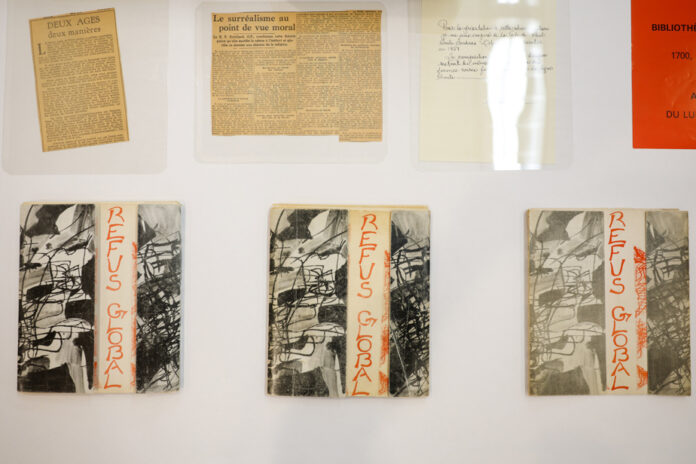Bookseller Mathieu Bertrand recalls this Canadian art auction held by Heffel in Vancouver on May 17, 2012. Between paintings by Jean Paul Lemieux, Paul-Émile Borduas, Emily Carr, Lawren Harris and others is a copy of Global refusal. Estimated price: between $8,000 and $10,000. Amount paid by buyer: $30,000.
“It was a totally ridiculous price,” says Mr. Bertrand, owner of the Bonheur d’occasion bookstore and buyer of private collections. It wasn’t worth it. But it brought out several copies. It took months before things calmed down. »
That day, the rich buyers pushed prices up much more than expected. Rare book buyers have had to adapt or, like Mr. Bertrand, wait for a downward readjustment.
“Until fifteen years ago, a copy of Le Refus global was selling for $2,500, $3,000,” he says. Now it has become rarer. In particular because the generational transfer has taken place. In the last 11 or 12 years, I have sold 8 copies of the collection for prices varying between $6,000 and $12,000. »
Over the course of a few interviews with experts, a consensus emerges: 400 copies of a book printed in 1948 is not a great rarity. Ah good ?
“A print run of 400 copies in 1948 in Quebec is not overtly small,” replies Mr. Bertrand, to our great astonishment. It’s not a very big print run, but you can’t say it’s a rare book. »
“Even today, we see it with legal deposit, several essays are printed in less than 1,000 copies,” says Daniel Chouinard, librarian in charge of purchases and donations of documents for heritage collections at Bibliothèque et Archives Nationales du Quebec (BAnQ). So 400 was a relatively large number. The proof being that it is continually coming out on the market. »
On the other hand, the impact that the collection had in the history of Quebec and the fact that it still attracts attention today make it a sought-after object.
Other factors influence the price: the condition of the document, its completeness and the presence, or not, of the band holding the sheets.
In addition, the book is not bound or sewn. It is composed of detached sheets. Refus global is one of them. So that some copies are found incomplete. Mathieu Bertrand says he bought three in this condition.
As for the headband, we understand that it was used to hold the sheets together. However, it is rare in the editions in circulation.
It happens that collectors bequeath rare works to libraries, museums, etc., against tax receipts. And once a book enters an institution, it is withdrawn once and for all from circulation, observes Mathieu Bertrand. So the book is getting rarer.
La Presse was able to trace several copies of Refus global in Quebec institutions and among certain individuals. According to our research, BAnQ has the most, five copies. What about it?
At the Canadian Museum of History in Gatineau, a copy is constantly on display, says Xavier Gélinas, curator of political history. “We have copy number 367 and are proud that it is intact,” he said. Since the opening of our permanent exhibit in the Canadian History Hall, it has been on continuous display. If I’m not mistaken, we rotate the pages every six months so that they don’t absorb too much light. »
For the price of $1,500, the Canadian Museum of History acquired the copy from Georges-Henri Gagnon, a man from Chicoutimi, in 2002. “Mr. received his copy from the hands of Borduas, relates Mr. Gélinas. He had fond memories of it. Contrary to the image of a feverish artist that we have preserved, Mr. Gagnon remembered a jovial and often playful teacher. »
Here are other copies of Refus global that we have found.















